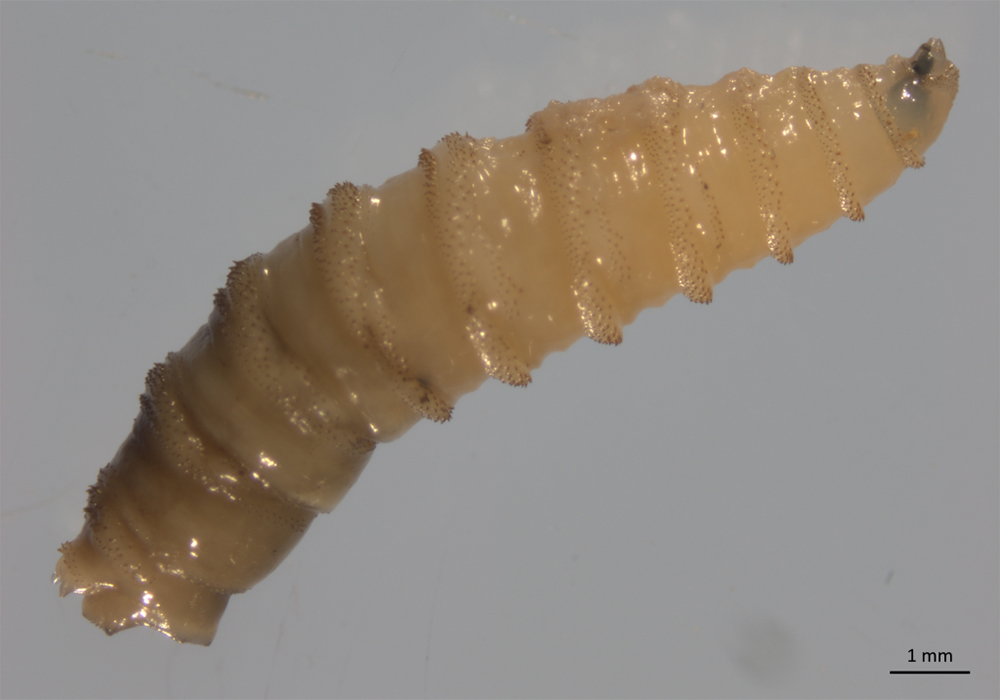Mapping the genome of the screwworm and thrip may help scientists develop new control measures for the insects
Researchers have decoded the genome of two agricultural pests — the parasitic New World screwworm and thrips.
The screwworm feeds on the flesh of livestock and thrips are tiny insects that transmit viruses to crops such as tomatoes, soybean, cannabis, and commercial flowers.
University of Cincinnati researchers hope to develop new control measures.
The New World screwworm is particularly destructive. The blue flies with pumpkin-orange eyes lay about 400 eggs in open cuts or sores on cattle, goats, deer and other mammals. The emerging larvae feed on living and dead tissue, turning a small innocuous cut into a large, infected wound requiring veterinary care. The screwworm has been a menace for decades and continues to cause billions of dollars in losses to livestock in South America where it is prevalent.
Read Also

Canola oil transloading facility opens
DP World just opened its new canola oil transload facility at the Port of Vancouver. It can ship one million tonnes of the commodity per year.
The fly was a scourge in North America, but was eradicated from the United States in 1982 through sterilization with chemicals or radiation.
Today, a laboratory operated by the U.S. Department of Agriculture and Panama has established a biological barrier outside Panama City, where millions of sterile screwworms continue to be air-dropped to prevent the species from moving north.
“They were once in Texas and Mexico. Then, through release of sterile individuals, the U.S. Department of Agriculture pushed them down to Panama,” said Joshua Benoit, an associate professor in U of C College of Arts and Sciences.
“The releases are to create a population dead zone where it is hard for any of them to move northward.”
Benoit and the research team were able to target particular genes that determine sex and control growth and development, or target particular behaviours that would normally help the flies find a suitable animal host. The genetic study will help scientists cull females before they hatch.
“An all-male population would be more cost effective at the time of release,” said Benoit, who previously sequenced the DNA for genomes of bedbugs. “There would be millions of males. But if you have to rear (both males and females) all the way to adulthood that gets pretty costly. A male-only population reduces the cost, which makes it a good system. If they do ever come back, it means we can rear a massive number of these (genetically) sterile males and do a localized release if ever necessary.”
In the genome study that decoded thrips, researchers mapped 16,859 genes to understand the insect’s sensory and immune systems and their salivary glands that transmit viruses.
These winged insects are the size of a dot in the letter ‘i’ yet they cause chaos to crop production around the world by not only eating plants but transmitting viruses.
“Everything about thrips is weird,” said Benoit. “They have a complex immune system. Their salivary glands are really unique. Their reproduction is unique. How they interact with the different viruses is unique. One of the reasons they are unique is because they sit on a borderline of holometabolism so they are not quite like a fly with a true pupae, they are not like a cockroach. They sit right in that division. One of the reasons why they got sequenced was because of their unique biology and the fact they are such pest.
“Thrips are a jack of all trades. They are good at many things and it’s their general combination of everything that makes them a really great plant pest.”
Holometabolism is complete metamorphosis, insect development, which includes the four life stages of egg, larva, pupa and adult.
The study found that thrips can be finicky eaters and their unique genetic adaptations allow them to feed on many insects. Their sophisticated system includes 96 immune genes, more than many other insects that have been studied. But with the genome decoded, scientists have more knowledge to develop good genetic pest management strategies
“Having the genomes allows a lot more research to be done,” he said. “The genome is like a springboard to much more research you want to address. You can identify unique aspects such as specific genes that are important to fertility or reproduction. You can develop lines that never reproduce if it gets too hot or too cold or develop males that, if they meet a female in the field, they cannot create offspring. You have to have a target to look at in order to start doing the work.”
For instance, one thrips virus of major agricultural concern is the tomato spotted wilt virus, which can devastate a crop’s yield by as much as 96 percent.
“We mapped the genome, but we also characterized immune aspects and how they feed,” Benoit said. “It was the first study of its kind to explain what underlies their reproductive mechanisms. It was far more detailed than previous genomic studies we’ve done.”
While pesticides have been the go-to choice for thrips management, it’s hoped that the genomic study will offer better environmental solutions.
“Pesticides do not discriminate at all,” he said. “The same pesticide that kills a termite can kill a bee. When you spray, it can kill other beneficial insects. We don’t want to eradicate species as much as find better ways to control them.”
The genetic study on the screwworm was published in the journal Communications Biology. The genomics study on thrips appeared in the journal BMC Biology.

















